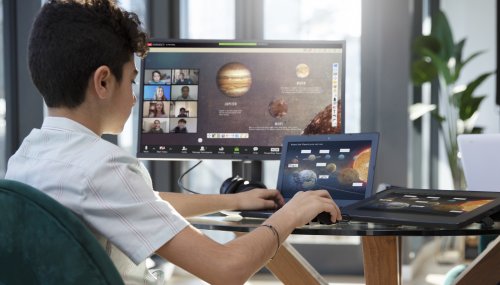School can be tough for any child, but for students with neurodiversity, challenges faced in the classroom can be amplified. Common day-to-day activities like interacting with classmates, listening to their instructors, and completing coursework can be massive hurdles for neurodiverse learners.

In the past decade, the field of education has undergone a paradigm shift with the advancement of technology, with this shift being accelerated over the course of the pandemic. These advancements in education technology (EdTech) have shown great potential in addressing these challenges by providing customized learning experiences and tools to support executive functioning and attention.
Neurodiversity covers various learning, attention, and socialization differences among students. Traditional classrooms may not provide adequate support for neurodiverse learners, who need personalized instruction and accommodations to manage sensory overload. EdTech provides individualized learning experiences that cater to the specific learning styles and needs of neurodiverse students. It also promotes inclusivity in the classroom by recognizing the strengths of all students, regardless of their neurological differences.

Clifford Chen, General Manager of the Presentation Group at ViewSonic
EdTech offers numerous benefits in addressing the challenges faced by neurodiverse students in traditional classrooms. One of the main advantages is the ability to provide customized learning experiences that are tailored to the unique needs of each student. This can include personalized instruction, targeted feedback, and adaptive assessments. EdTech can also offer tools to support executive functioning, attention, and memory, such as reminders, timers, and study aids. Visual aids and interactive activities can be used to enhance engagement and understanding, while real-time feedback provided information to the teachers, so that they can facilitate the learning outcome for students. By leveraging these benefits, EdTech can help neurodiverse students to achieve their full potential and thrive academically.
Today, teachers have access to a variety of EdTech solutions that cater to the unique needs of neurodiverse learners. For students with dyslexia or other language processing difficulties, EdTech with built-in software and digital content can be highly beneficial. These tools can help students to better understand and interact with written and visual information. They can also be recorded and played back, ensuring students can catch any information they may have missed the first time. Classroom analysis tools can help teachers identify where students with ADHD or executive function deficits are losing interest, allowing instructors to make necessary adjustments to the class to ensure students stay focused and effectively manage their workload. For students on the autism spectrum, gamification and interactive multimedia tools can be highly engaging and effective. These tools can help students to develop social and communication skills, as well as improve their attention. For students with sensory processing difficulties, virtual simulations can provide a safe and controlled environment for learning and exploration, allowing them to experience different scenarios and situations more interactively and engagingly. Likewise, the use of virtual avatars provides students with solid social queues, giving them more control over the way they express themselves. These are just a few examples of the many EdTech solutions available to support the unique needs of neurodiverse learners.
In order for EdTech solutions to be effective for neurodiverse learners, proper implementation and accessibility must be considered. Educators should receive training and support in using EdTech solutions effectively, and resources should be made available to ensure that all students have access to the necessary devices and software. It is important to ensure that these solutions are accessible to all students, regardless of their technical proficiency or learning style. Collaboration between educators, families, and students can also play a crucial role in designing personalized learning plans that meet the unique needs of each individual learner.
EdTech solutions offer numerous benefits for neurodiverse learners, including customized learning experiences, tools to support executive functioning, and visual aids to enhance engagement and understanding. Going forward, the realm of AI research is also focused on improving the educational experience for teachers and students. For example, we can utilize AI technology to gather engagement data from students, which aligns with the concepts discussed in this article. However, at the root of all these technologies, it is important to prioritize inclusion and accessibility in education to ensure that all learners have equal opportunities to succeed. By leveraging the benefits of EdTech solutions and working collaboratively, we can create a more inclusive and effective learning environment for all students.





